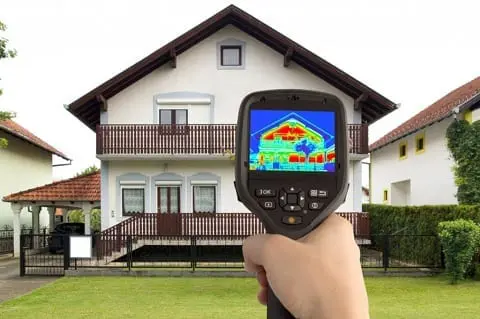
By Seve Kale
“I didn’t believe it until I saw the bills coming in,” says Jay Krakowsky, whose home in Barnegat, N.J., has LEED certification, “but I’m paying one-quarter less than what I was paying at my previous home.”
Because they live in an energy-efficient LEED (Leadership in Energy and Environmental Design) home, Krakowsky and his wife enjoy significant savings on their heating bills — especially during frigid Northeastern winters.
There are various ways to make your home environmentally friendly, but achieving certification from the U.S. Green Building Council is increasingly popular. So, what does LEED certification mean for your new home — and why does it matter?
LEED certification is based on a point system where more points earn a home a higher ranking for environmentally conscious design. Points are awarded in eight different categories: Regional Priority, Water Efficiency, Material and Resources, Sustainable Site, Innovation and Design, Energy and Atmosphere and Indoor Environmental Quality.
Building teams work toward LEED certification from the very beginning of home construction, as they must meet certain prerequisites to qualify for the certification process, such as a waste factor limit and various indoor air quality and energy use standards. Once your home is built to certification standards, your efforts result in three key improvements: a lower utility bill, an environmentally conscious home and a more comfortable indoor environment. Kermit the Frog was wrong — sometimes it is easy being green!
Here’s the Point Breakdown:
- Certified: 45+ points
- Silver: 60+ points
- Gold: 75+ points
- Platinum: 90+ points
And Here’s Why it Matters:
Go Green to Save Green
You’ll receive both bragging rights and a little extra cash, as LEED-certified homes use 30 percent to 60 percent less energy than a comparable home built to the International Energy Conservation Code. “Why wouldn’t a homeowner spend an additional $10/month on a mortgage if they understand it will save them more than $30/month in utility costs?” asks Jim Newman, owner of Newman Consulting Group, LLC, an Bloomfield, Mich.-based firm that that works with architects, builders and contractors to design and construct energy efficient buildings.
In addition to a lower utility bill, expect lower insurance rates. According to Garratt Hasenstab, member of the LEED Advisory Committee on Advocacy and Director of Development at the Chicago-based Verdigis Group, the “attention to durability, as well as the third-party verification that most LEED-registered homes pursue results in premium discounts for LEED-certified homes from home insurance companies .” Hasenstab went on to say that, the increased marketability that goes hand in hand with the quality and performance associated with LEED homes could earn you some money in the future, as certified homes average an 8 percent to 12 percent price premium over comparable non-certified homes.
Approved by Mother Nature!
Beyond lower operating costs, LEED-certified homes are better for the environment. Homes built to LEED certification meet strict environmental guidelines ranging from regional priority and water efficiency to sustainable sites, material and resources. “The LEED for Homes durability evaluation process ensures [durability and sustainability] by identifying any potential environmental and climate risks associated with building in that area, then developing strategies managed by the integrated design and construction team to address those potential risks,” Hasenstab says. Architects take a comprehensive approach to evaluation, even going as far as to consider how they might reduce the amount of fuel required by the owner’s commute — more proof for Sean Canning, LEED AP and Principal Architect of Ten Seventy Architecture in San Diego, Calif., that “sustainable design transcends the building.”
More Comfortable
Hippies and hipsters and everyone in between can find something to praise in LEED-certified homes, as they boast innovative, sustainable features designed to provide maximum comfort. Hasenstab compares the high standards that accompany the LEED seal to “the hood-ornament on a Rolls Royce.” Comfort and quality are a given. Not only do LEED-certified homeowners pay less on utilities (and are helping to save the polar bears), but they also enjoy homes with proper ventilation, high-efficiency air filters and reduced mold and mildew because of tighter building envelopes and energy-saving practices. Improved indoor air quality (IAQ) can produce considerable health benefits down the road — now that’s a breath of fresh air.
Beyond certifying homes and buildings, LEED recognition raises awareness about sustainable building practices. To that end, the U.S. Green Building Council is committed to maintaining the LEED certification program’s high standards and ensuring its bright future.
While not all of today’s newly constructed homes are LEED-certified, many of them are quite energy efficient. Through higher building standards, today’s new homes offer energy efficiency and higher IAQ and cost savings. So, go green, or go home (to your less efficient, less comfortable house).
To learn more about LEED certification and which green home certification program is right for you, check out our Resource Center article, Many Shades of Green.
Seve Kale is a writer for NewHomeSource.
 7 Steps to Master Table Setting
7 Steps to Master Table Setting